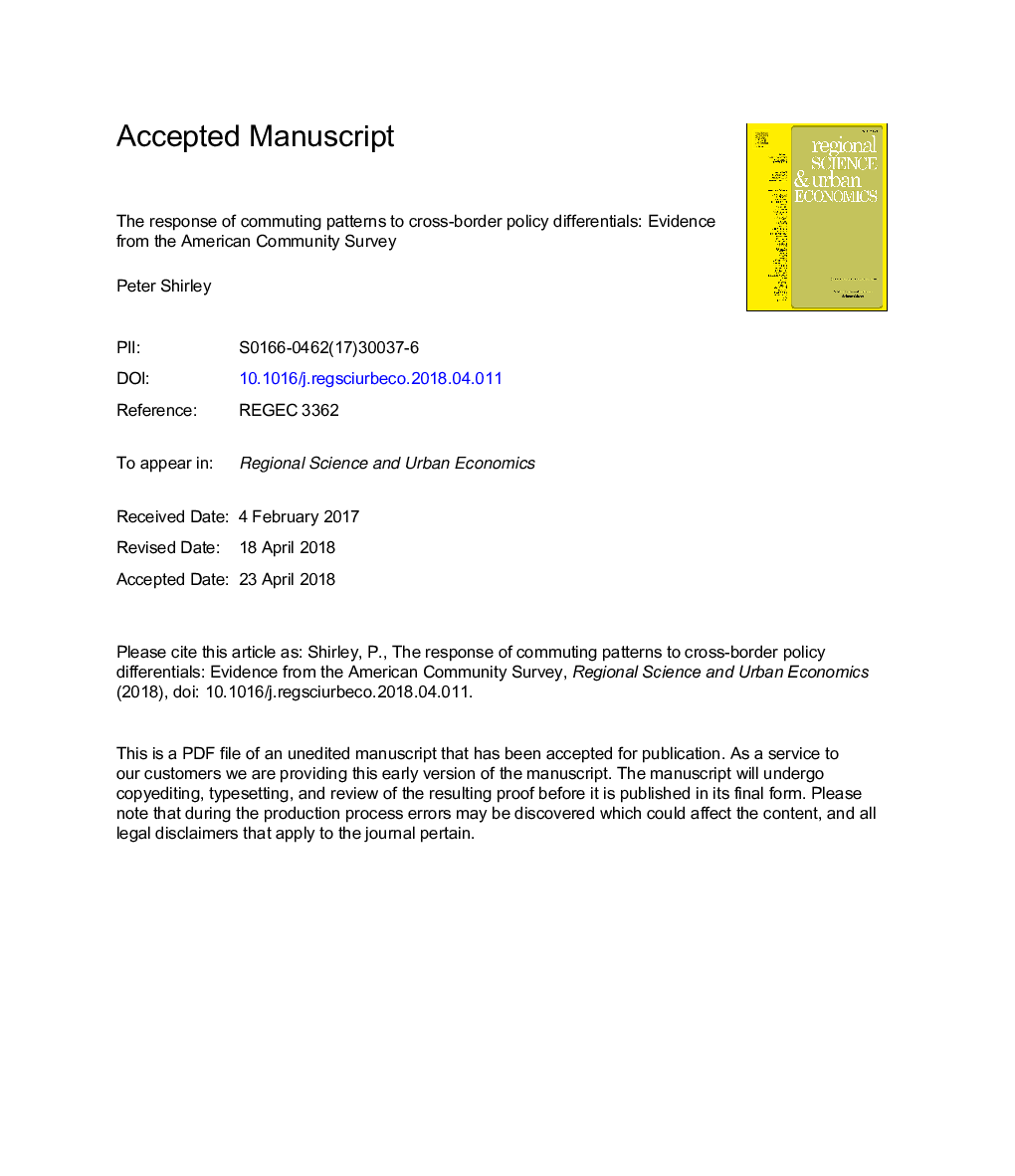| Article ID | Journal | Published Year | Pages | File Type |
|---|---|---|---|---|
| 7383584 | Regional Science and Urban Economics | 2018 | 36 Pages |
Abstract
The response of commuting patterns across state borders to policy differentials has implications for how policymakers design economic policy based on place of work, and for researchers who use contiguous geographies to estimate treatment effects of such policies. This paper investigates the response of such movements utilizing changes in cross-border differentials in the minimum wage and Earned Income Tax Credit state supplements. Specifically, effects of the minimum wage on commuting patterns are estimated for restaurant workers, high school dropouts, and teenagers. The effects of the EITC on commuting patterns are estimated for single female heads of household with children. The main results show that a $1 increase in the minimum wage differential is associated with a 0.5 to 1 percentage point increase in the probability of commuting. This is approximately a 15-25 percent increase over the mean commuting rate for the minimum wage samples of interest. Results for the EITC are less precise and show that a 0.1 increase in the phase-in rate differential is associated with an increase in commuting probability of 0.9 percentage points, a result that is not statistically different from zero. The minimum wage results are strongest along non-MSA borders.
Related Topics
Social Sciences and Humanities
Economics, Econometrics and Finance
Economics and Econometrics
Authors
Peter Shirley,
